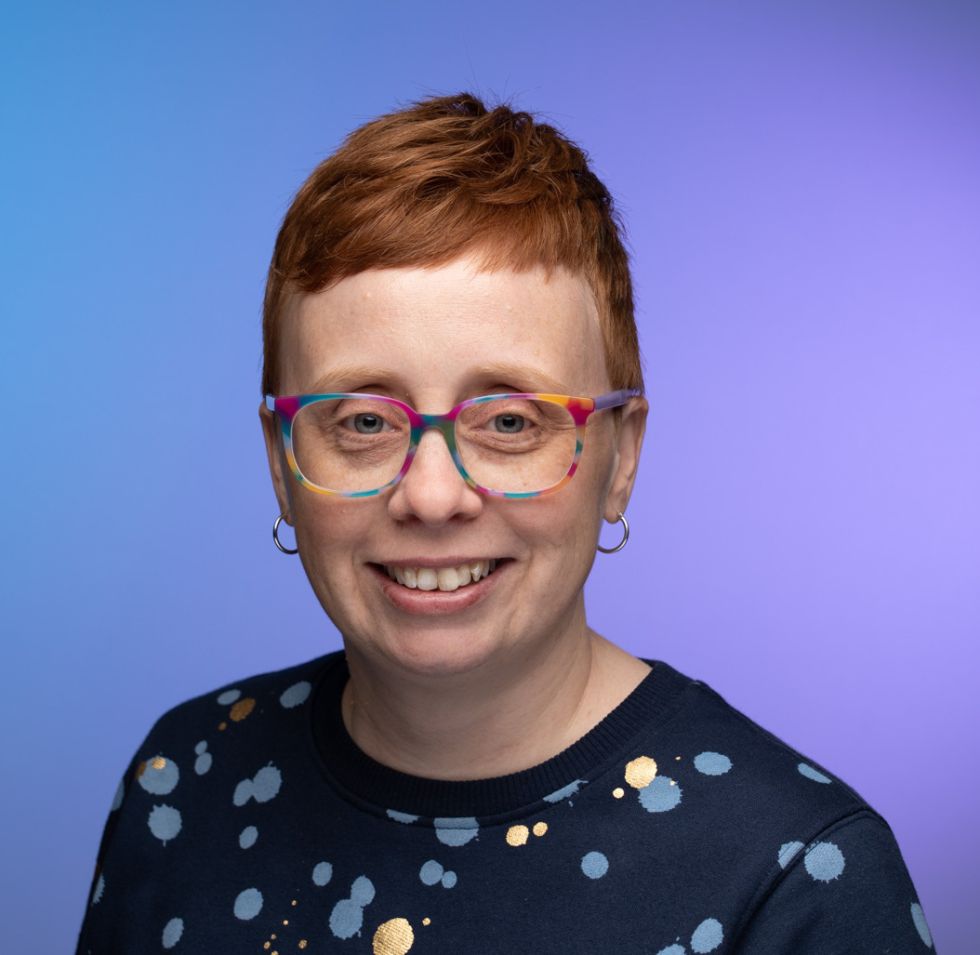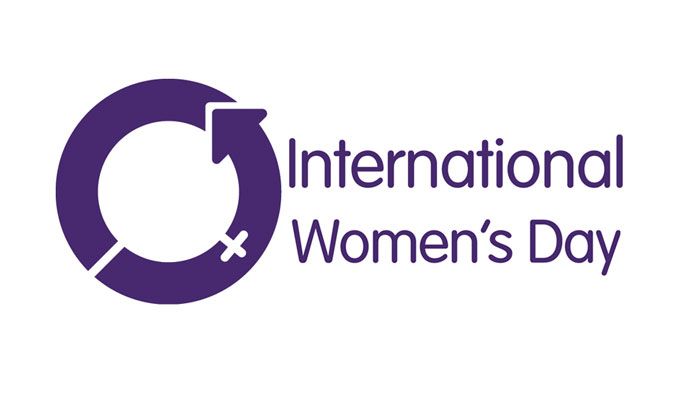#IWD2024: Creative Women - Tina Redford
08 March 2024
To celebrate International Women's Day on Friday 8th March 2024, we're featuring interviews with dynamic, trailblazing, and courageous women working in creative fields, who have a connection to Lancashire. Meet Tina Redford, who has been the Artistic Director of LeftCoast in Blackpool since 2017.

International Women's Day (IWD) is an annual global event celebrating women and their achievements.
IWD was first initated in 1911 and has since grown into a global movement encouraging us to stand up for a more diverse, equitable and inclusive world, free of discrimination and stereotypes.
This year's campaign theme is #InspireInclusion to collectively forge a more inclusive world for women.
When we inspire others to understand and value women's inclusion, we forge a better world.
And when women themselves are inspired to be included, there's a sense of belonging, relevance and empowerment.
As part of our #IWD2024 "Creative Women" Series, meet Tina Redford, the Artistic Director of LeftCoast, an arts and culture organisation supporting communities in Blackpool.

Tina Redford was born in Leigh in the late 60s when the town was part of Lancashire rather than Greater Manchester. Currently, she works in Blackpool with LeftCoast.
My wonderful Aunty Joyce had a B&B in Blackpool when I was a child, so every half term I was shipped to the Coast by my mum. I loved the town then and I still do.
Prior to starting at LeftCoast in 2017, Tina was the Head of the Library Service in Warrington and Director of Culture Warrington.
She graduated from Lancaster University in 1988 with BA Hons in Marketing & Theatre Studies before embarking on an artistic career for the next 15 years that involved acting, stage management, gigging, lecturing and running a professional recording studio.
Tina was also the Regional Director of MusicLeader North West for 7 years, a national programme dedicated to the professional development of musicians, especially those working with children and young people.
Tina, what inspires or motivates your creative practice?
It is the people that surround me. Collaboration is its own reward.
I have an energetic and committed team at LeftCoast, full of lively ideas and the skills to implement them. They absolutely want to do their best and make a difference to the lives of the residents we work with. That gives me motivation.
Aside from the inspiration I discover in the brilliance of other artists work, most of the inspiration for my creative direction has come from the people who have supported me along the way, both in a personal and critical context.

From a formative perspective, I grew up in an extended family surrounded by formidable and funny women
Two grandmas, lots of aunties (real and pretend ones) and at the helm, a strong mum. And while they said they upheld the existing paradigm that men wore the trousers in society, that clearly was not the case. To the extent that the men folk in my family were like Jeanette Winterson’s dad in Oranges are Not the Only Fruit i.e. mostly silent.
And it was these women who used to ask me to sing and play for them in their front rooms when I got my first guitar. In those days (i.e. the late 70s) school music lessons were free, so there wasn’t a financial obstacle to overcome.
At the time I was really inspired by Elvis which meant I grew up singing with a hybrid accent which was Mississippi via Wigan, but because of my family’s support I was imbued with a belief that I could be as inventive (and loud) as any boy and I could do whatever I wanted to do.
Gender was not an obstacle, and neither was class. My parents were war babies, who in their 20s were able to experience genuine social mobility, so the idea that their children might go to university or pursue a creative career was no longer unimaginable.
Obviously, this type of support is ‘just love’ and it can be tough love at times involving some straight-talking as well as cheerleading, but it creates a foundation of self- confidence to be an expressive and creative individual in the world.

Once I embarked on a path of singing and songwriting, critical intervention from teachers, peers and eventually, managers provided support for me to get better at understanding my creative process and to help me navigate the business side of things too.
This type of support is so important for young female creatives to enable them to articulate their craft and - by clearly communicating how they ‘make stuff’ - help them to distinguish its worth and value. Often women can be less adept at this than men.
My creative path has also been inspired by technology which inarguably democratised and disrupted the music industry in the mid-90s before it found its feet again.
I hear and acknowledge all the arguments that there is not enough representation in tech for it to be a truly inclusive sector, but I do think it has taken away some ‘inclusion obstacles’ in my career. Particularly, enabling commercial and broadcast quality studios to exist in sheds and garages rather than bespoke buildings.
Any advice for women starting out or making their mark in the creative industries?
It is my observation that most creative career paths are as linear as spaghetti.
Trying to make sense of the sector, knowing where to find commissions/briefs and how to respond to them can be so daunting.
So, seeking out creative networks of like-minds is beyond beneficial.
It is such an obvious piece of advice, but I would seek the collective intelligence of others doing what I wanted to do. There’s knowledge, support and encouragement found in numbers.
As much as it is possible, it is also vital to make work, even without a bottleneck of commissions.
Most of us learn by doing. Iteration enables you to talk with clarity about the nature of your creative practice and what makes it distinctive.
By doing this you can attribute tangible worth and value to your time spent creating things. It helps you ask for your fee.
Mentoring is also useful for supporting this process of self-discovery.
In addition, I would lean into new technologies right now.
In its current guise, I believe AI can be a compliment to existing creative practice and enable the better communication and exploration of ideas. AI can bring functionality, productivity and to some degree, content to the table.
However, context and humanity is the role of the creative.
We still want to connect to art, design and craft through a person with a heart and an organic brain. That is our mark.
Jeanette Winterson’s clever collection of essays in '12 Bytes’ explores how AI will change the way we live, work and love. It is refreshing to hear a creative, especially a writer, advocate for the technology.

How do you think we can encourage inclusion, remove barriers, and offer the right types of support to increase opportunities in the creative sector and in our communities?
Inclusive opportunities have to offer diverse activities, so people won’t dismiss projects as being ‘not for them’ and, of course this is reflected in how projects are spoken about and marketed.
When co-creating neighbourhood community projects, LeftCoast seeks to deliver work across longer timeframes (think years rather than weeks).
This enables us to create multiple and ongoing opportunities for engagement with artists and participants.
We aim to ‘welcome people in’ at all stages of the creative process, not just at the beginning.
For example, when we were creating our Wash Your Words laundry room there were several diverse activities across an 8 month period to encourage different participants to ‘join in’ including, the co-design, building and branding of the endeavour.
For creatives, I think there needs to be more mentoring support (and financial support from funders) to develop not only creative practice but sector skills and knowledge.
We need to find more ways for creatives to access support when it is needed rather than when it can be provided.
I think the online/offline work that Alex O’Toole of Arts Lancashire is doing with her Good Creator programme is really interesting in this respect. By Alex's own admission, it's a work in progress as she trials different formats and approaches, but I feel through these projects she is trying to work out how to be a ‘live’ and relevant companion to creative needs.
I believe it’s important for there to be networks for sharing and celebrating women’s creativity, especially for creatives working in isolation.
Visibility and representation in numbers is heartening.
Whilst there is a plethora of online advice and guidance, meeting face-to-face can make sharing more tailored and meaningful.
It can also facilitate us to have harder conversations about inclusion that transcend some of the No Debate spaces that exist on the internet.
We also need generational respect (and sometimes forgiveness or kindness) to progress ideas amongst us as successive generations of creative women.
Connect with Tina Redford on LinkedIn.

About LeftCoast
LeftCoast delivers highly-engaging and socially-useful arts and cultural projects in Blackpool. Since 2013, we have been co-producing ambitious and transformative experiences with neighbourhood communities across the town.
Website: leftcoast.org.uk
Instagram: @leftcoastuk
X: @leftcoastuk
All project images supplied by LeftCoast.

Tina was photographed at Blackburn Cathedral by Christina Davies
Christina Davies (Fish 2 Photography) is based in Preston and specialises in branding, interior, and commercial photography. Christina started her business in 2008 and loves working with small Lancashire and North West based businesses.
- View Christina's profile on our Creative Directory here.
- Websites: www.fish2commercial.co.uk/ / fish2.co.uk
- Instagram: @fish2commercial / @fish2photo / Twitter: @fish2photo

About IWD
International Women's Day (8 March) is a global day celebrating the social, economic, cultural, and political achievements of women.
The day also marks a call to action for accelerating women's equality.

IWD has occurred for well over a century, with the first gathering in 1911 supported by over a million people.
Today, IWD belongs to all groups collectively everywhere. IWD is not country, group or organisation specific.
We invite you to inspire inclusion in your own work and life.
Imagine a gender equal world.
A world free of bias, stereotypes, and discrimination.
A world that's diverse, equitable, and inclusive.
A world where difference is valued and celebrated.
Together we can forge women's equality.
Collectively we can all #InspireInclusion.
Celebrate women's achievement. Raise awareness about discrimination. Take action to drive gender parity.
IWD Belongs to everyone, everywhere.
Inclusion means all IWD actions is valid.
#IWD2024 #InspireInclusion
Website: internationalwomensday.org







